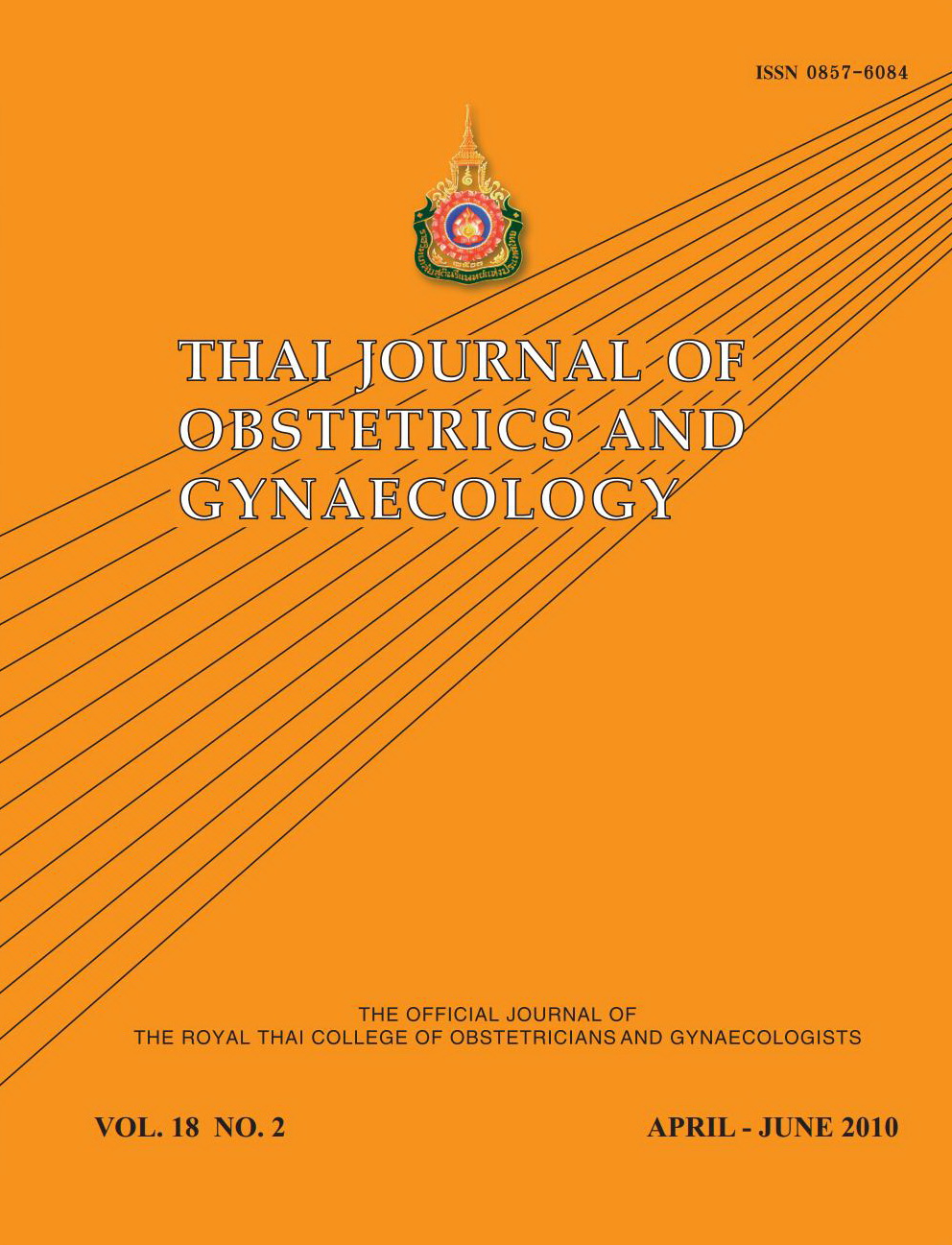Shortened Postpartum Magnesium Sulfate Treatment for Severe Preeclampsia
Main Article Content
Abstract
Materials and Methods: We recruited labouring pregnant patients in their 2nd to 3rd trimester who were diagnosed as preeclampsia (blood pressure ≥ 140/90 mmHg plus urine protein dipstick ≥ 1+) between March 1st, 2009 and February 28th, 2010. Inclusion criteria for severe preeclampsia were (1) blood pressure ≥ 160/110 mmHg, (2) urine protein dipstick ≥ 2+, (3) severe headache and blurred vision, (4) epigastric pain and willing to be enrolled in the study. Exclusion criteria were (1) platelet count <100,000 cells/mm3 and for evidence of microangiopathic hemolytic anemia (elevated lactic acid dehydrogenase), (2) elevated liver enzymes (ALT or AST), (3) pulmonary edema and (4) eclampsia. Criteria to stop postpartum magnesium sulfate were (1) urine output more than 100 ml/hr for 2 consecutive hours, (2) no clinical symptoms of severe headache, blurred vision and epigastric pain and (3) deep tendon reflex < 3+. The minimal time to stop magnesium sulfate was 12 hours postpartum. The period of time that magnesium sulfate was given and reinitiation rate of magnesium sulfate and eclamptic seizure were recorded. We compared the study result with the patients who were diagnosed severe preeclampsia one year earlier which was between March 1st, 2008 and February 28th, 2009 by reviewing medical and labour records. All patients in the latter group received standard dose of postpartum magnesium sulfate which was continued until 24 hours postpartum. The difference of administration time of magnesium sulfate, reinitiation rate of magnesium sulfate and effectiveness in eclamptic seizure prevention were compared between both groups.
Results: There were 76 severe preeclampsia patients who were recruited in the shortened magnesium sulfate group. There were 75 severe preeclampsia patients in the traditional 24 hours magnesium sulfate group. Shortened postpartum magnesium sulfate treatment was as effective as traditional 24 hours magnesium sulfate in seizure prevention. The period of administration time of shortened group was less than in the controlled group (14.08 ± 3.42 hours and 23.69 ± 2.65 hours, p<0.001). None of the patients in either groups had to reinitiate magnesium sulfate or developed seizure.
Conclusion: Clinical parameters can be used to set the criteria to stop and reinitiate postpartum magnesium sulfate regarding to patient safety. When the time and the amount of magnesium sulfate administration is reduced, it helps in reducing health personnel workload and hospital expenses.


